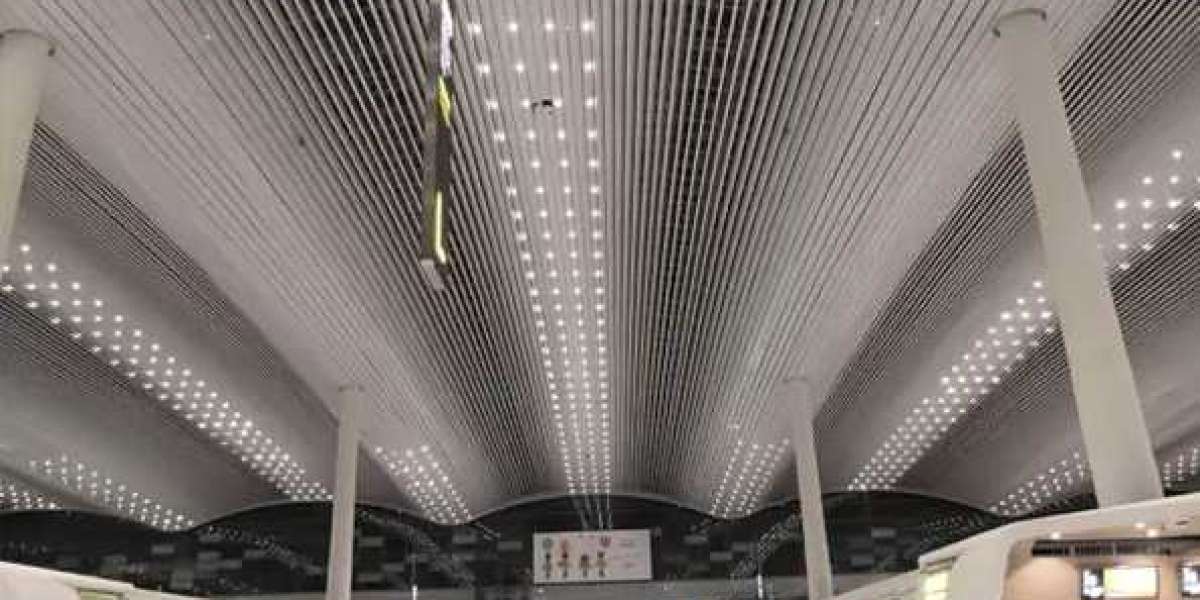Introduction to Aluminum Composite Panels (ACP)
Welcome to the world of modern architecture, where innovation and creativity intertwine to create breathtaking structures that captivate our senses. In this realm, materials play a vital role in bringing visions to life, and one material that has been making waves is none other than Aluminum Composite Panels (ACP). With its sleek appearance and remarkable versatility, ACP has become a go-to choice for architects looking to push the boundaries of design. So, if you're curious about the wonders of ACPs and how they can elevate your architectural project to new heights, you've come to the right place! Get ready as we dive into the ins and outs of these incredible panels and discover why they have become an indispensable tool for modern architecture.
The Construction and Composition of ACPs
The construction and composition of aluminum composite panels (ACPs) play a crucial role in their popularity in modern architecture. ACPs are made up of two layers of aluminum sheets with a core material sandwiched between them. The outer layers provide strength, durability, and protection against weather elements, while the core material provides insulation and rigidity.
The aluminum sheets used in ACPs are typically coated with a protective finish to enhance their resistance to corrosion, fading, and scratching. This coating also allows for easy cleaning and maintenance of the panels. The core material can be made from various materials such as polyethylene or mineral-filled fire-retardant compounds depending on the desired properties of the panel.
The combination of these materials results in lightweight yet strong panels that offer excellent structural integrity. The design flexibility offered by ACPs is unmatched as they can be easily cut, bent, shaped, and molded into various forms to meet architectural requirements. This versatility allows architects to create unique designs that seamlessly blend with surrounding structures or stand out as striking focal points.
Moreover, the use of ACPs in modern architecture provides an eco-friendly solution due to their recyclability. The production process involves minimal waste generation compared to other building materials like concrete or steel. Additionally, ACPs have good thermal insulation properties which contribute towards energy efficiency by reducing heating or cooling needs.
In summary, the construction and composition of aluminum composite panels make them an ideal choice for modern architecture projects. Their innovative design allows for aesthetic creativity while offering durability, easy maintenance, and environmental sustainability. Whether it's for cladding facades, creating decorative features, or constructing interior partitions,
ACP's numerous benefits make it a top choice among architects globally.
Advantages of Using ACPs in Modern Architecture
When it comes to modern architecture, aluminum composite panels (ACPs) have become increasingly popular due to their numerous advantages. One major advantage is the aesthetics and design flexibility that ACPs offer. These panels come in a wide range of colors, finishes, and textures, allowing architects and designers to create unique and visually appealing facades.
In addition to their versatility in design, ACPs are also lightweight yet durable. This makes them easy to handle during installation while ensuring long-lasting performance once installed. The durability of these panels is further enhanced by their resistance to weathering, corrosion, and UV rays.
Another notable advantage of using ACPs is their low maintenance requirements. Unlike other building materials such as wood or concrete, ACPs do not require regular painting or sealing. Simply cleaning the surface with mild soap and water will keep them looking brand new for years.
Furthermore, ACPs provide excellent thermal insulation properties which can contribute to energy efficiency in buildings. The core material between the two aluminum sheets helps regulate temperature variations inside the structure, reducing reliance on heating or cooling systems.
ACPs are cost-effective compared to many other architectural cladding options. Their lightweight nature reduces transportation costs while their low maintenance requirements save money on upkeep over time.
Utilizing aluminum composite panels in modern architecture offers a multitude of benefits including design flexibility, durability, low maintenance needs, energy efficiency potential, and cost-effectiveness. With these advantages combined, it's no wonder why more architects are turning towards ACP solutions like WILLSTRONG for their projects.
Aesthetics and Design Flexibility with ACPs
One of the key advantages of using Aluminum Composite Panels (ACPs) in modern architecture is their ability to enhance the aesthetics of a building. With their sleek, contemporary look, ACPs can instantly elevate the visual appeal of any structure. Whether it's a commercial building, residential complex, or even an interior space, ACPs offer endless design possibilities.
The versatility of ACPs allows architects and designers to explore various shapes, sizes, colors, and finishes. From bold and vibrant hues to subtle metallic shades or even natural wood textures – there are countless options available to create unique and eye-catching designs. The lightweight nature of ACPs also makes them easy to manipulate for intricate detailing or unconventional forms.
Moreover, the design flexibility offered by ACPs extends beyond just appearances. These panels can be easily bent or curved into different shapes without compromising on strength or durability. This opens up doors for innovative architectural designs that were previously limited by traditional materials.
Another aspect that adds to the design flexibility is the possibility of incorporating other materials alongside ACPs. For instance, glass facades combined with aluminum composite panels can create striking visual contrasts while ensuring energy efficiency and structural integrity.
In addition to their aesthetic appeal and limitless design options, ACPs also offer practical benefits such as weather resistance and sound insulation properties. Their low maintenance requirements make them an ideal choice for modern architecture projects seeking both beauty and functionality.
Durability and Maintenance of ACPs
One of the key advantages of using Aluminum Composite Panels (ACPs) in modern architecture is their exceptional durability. ACPs are known for their ability to withstand harsh weather conditions, making them a reliable choice for both interior and exterior applications.
Thanks to their unique composition, which typically includes two aluminum sheets bonded to a non-aluminum core material, ACPs offer excellent resistance against impact, corrosion, and fire. This makes them highly durable and long-lasting compared to other building materials.
Additionally, ACPs require minimal maintenance over time. Unlike traditional materials such as wood or brick that may need regular repainting or refinishing, ACPs retain their appearance without much effort. They are resistant to fading, chipping, and peeling, ensuring that your building maintains its sleek aesthetic for years to come.
Maintenance mainly involves routine cleaning with mild soap and water or gentle household cleaners. The smooth surface of ACPs prevents dirt from accumulating easily while also allowing for easy removal if necessary. Regular inspections can help identify any potential issues early on so that they can be addressed promptly before causing significant damage.
The durability and low-maintenance nature of Aluminum Composite Panels make them an ideal choice for modern architectural projects where longevity and aesthetics go hand in hand. With proper care and periodic inspections, buildings clad in ACPs can enjoy a beautiful appearance that lasts for decades without compromising on structural integrity!
Conclusion
Aluminum Composite Panels (ACPs) have become an integral part of modern architecture, thanks to their numerous benefits and versatility. The construction industry has embraced the use of ACPs due to their lightweight nature, durability, and aesthetic appeal.
One standout player in the ACP market is WILLSTRONG. With its innovative designs and commitment to quality, WILLSTRONG offers a range of high-quality ACP materials that cater to the needs of architects and designers worldwide. From commercial buildings to residential projects, WILLSTRONG ensures that every structure stands out with its exceptional products.
The composition of aluminum composite panels makes them ideal for various architectural applications. Their combination of a polyethylene core sandwiched between two thin layers of aluminum creates a panel that is not only lightweight but also strong and durable. This unique construction allows for easy installation while maintaining structural integrity over time.
The advantages offered by ACPs are truly remarkable. One significant benefit is their design flexibility, allowing architects and designers to explore creative possibilities in terms of shapes, sizes, colors, and finishes. Whether it's curvilinear forms or sleek minimalist designs, ACPs can be customized according to individual preferences without compromising on functionality or aesthetics.
Durability is another key advantage offered by ACPs. The aluminum outer layer provides excellent weather resistance while protecting against corrosion and fading caused by UV rays. Additionally, these panels require minimal maintenance compared to other building materials such as wood or stone cladding.
In conclusion,WILLSTRONG Aluminum Composite Panels offer an array of benefits suitable for modern architecture projects: design flexibility for innovative structures; durability for long-lasting performance; low maintenance requirements;and visual appeal through various finishes,colours,and textures.
From commercial buildings seeking eye-catching facades,to contemporary residential projects looking for cutting-edge exterior solutions,WILLSTRONG caters excellentlyto each requirement.














